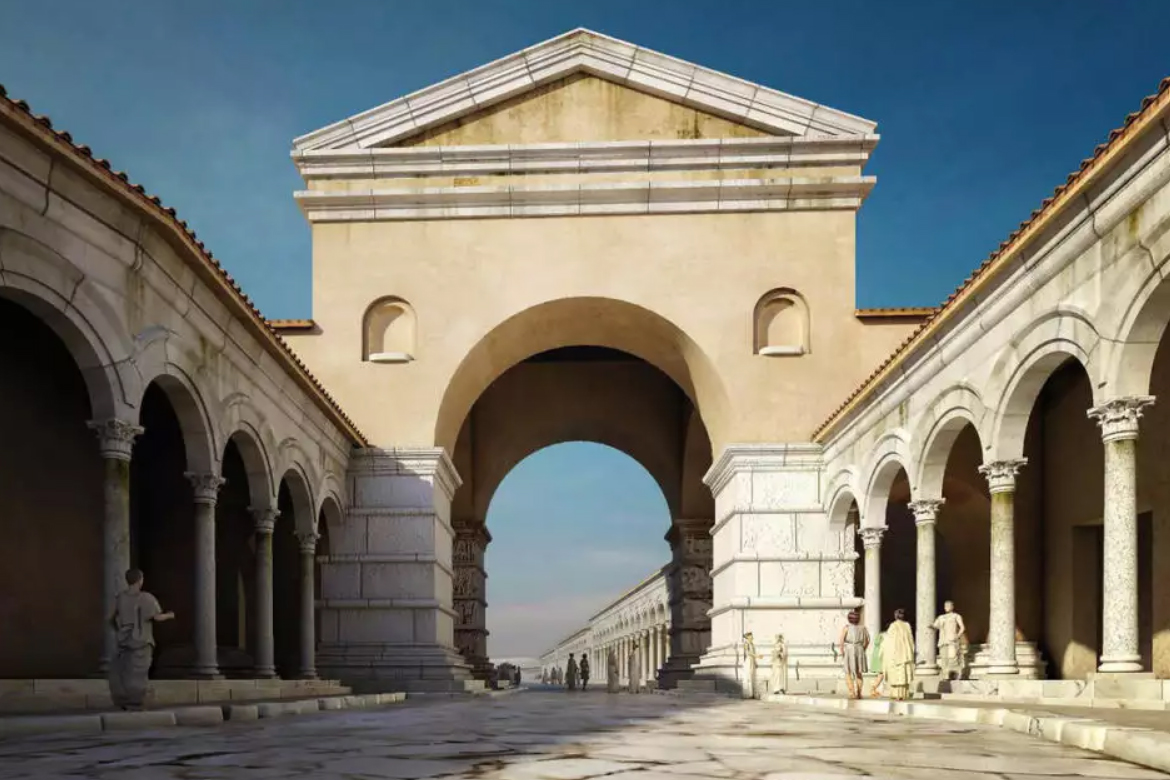The city was founded by the Macedonian general Kassandros, 316/5 BC. It was named after his wife, half-sister of Alexander the Great, Thessaloniki. Under that name were 26 cities located around the Thermaic Gulf united. During the 2nd century BC the city was conquered by the Romans and became the seat of the Roman province of Macedonia. It is probable that it was originally founded on the site of ancient Thermi, from which the Thermaic Gulf was named.
During Galerius’ reign, the city was an imperial capital due to its important strategic location. Galerius built an imperial palace, a racetrack, a triumphal arch and a mausoleum in the city. With the completion of Via Egnatia (120 BC), Thessaloniki became the most important junction between East and West. After the division of the Roman Empire, it was a candidate for becoming the capital of the Eastern Roman Empire. In the end, Byzantium was chosen. During the Byzantine Empire, Thessaloniki was called a “co-governing” city and was an important administrative and military center, while becoming a hub for intellectual and cultural development. The culmination was the period of the 14th century, which was characterized as “Thessaloniki’s Byzantine golden age”.
After its conquest by the Ottomans in 1430, the city remained part of the Ottoman Empire for about five centuries. Thessaloniki was a destination for the Jews who were expelled mainly from the Iberian Peninsula in 1492 but also from northern Europe, and thus a large Jewish congregation was formed in the city. The Jewish settlement in Thessaloniki made the city an important Jewish metropolis at least until the beginning of the 20th century. From the middle of the 19th century, the city was transformed into a cosmopolitan and multicultural center in the Ottoman Empire, while due to its geopolitical position it was a pole for political movements and associations.
With its accession to the Greek state in 1912 and mainly after the Asia Minor disaster, when refugees from Asia Minor settled in Thessaloniki and thus strengthened the Greek element, while a significant number of Muslims were exchanged in the population exchange with Turkey, the city population showed significant changes. For this reason, Thessaloniki was called “mother of refugees”. After the great fire of 1917, the city was reorganized in terms of urban planning and architecture, expanding its style with ancient Greek and European elements and destroying mainly Ottoman places of worship.
During World War II, Thessaloniki was occupied by German power and lost its strong Jewish population. The city’s most culminating Jewish congregation was destroyed. Today, Thessaloniki is the largest city in size and population in Macedonia and the second largest in Greece. The city’s patron saint is St. Demetrius (280-306 AD), one of the most important saints in the Orthodox Christian Church, who lived and suffered martyrdom in the city during the reign of the Roman emperor Diocletian.
